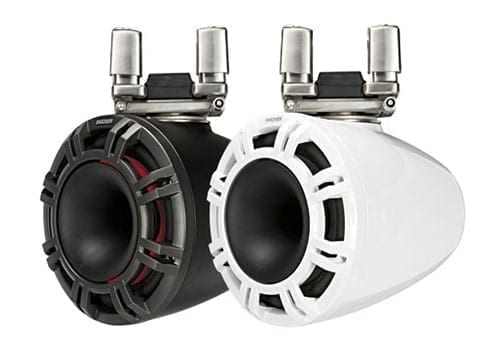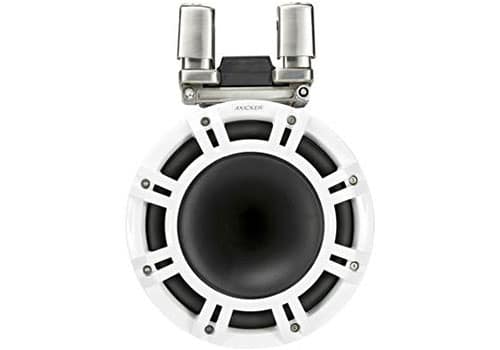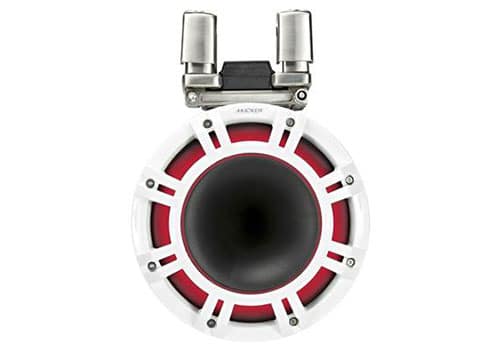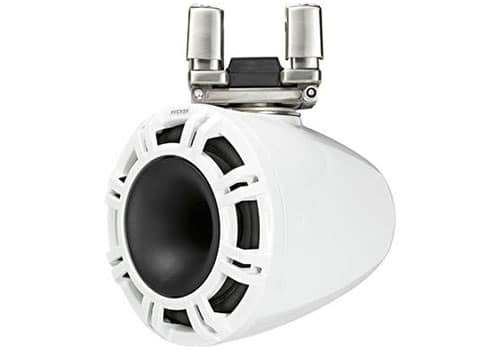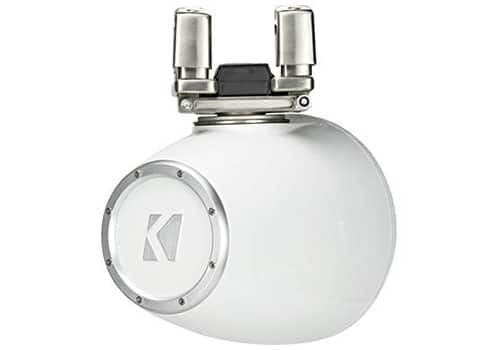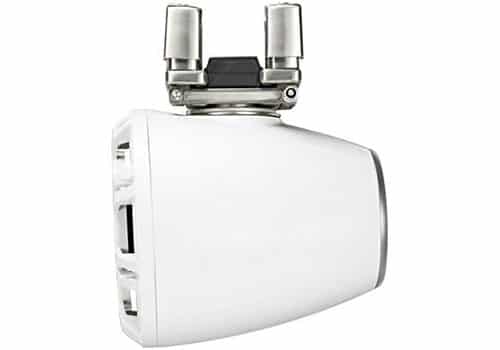Home > Product Installs & Reviews > Product Reviews > Car Speaker Reviews > Kicker KMTC9 Tower Speakers Review : First Look
In this article: We'll take a first look at Kicker's KMTC9 tower speakers and review it's key features and hardware and provide our own insights along the way.
They've come a long way, tower speakers. It's interesting to see how these speakers evolve since the concept is relatively still in its infancy. The speaker technology that's used isn't, but the idea of getting music to a wakeboarder behind the boat is. And although it may sound like a simple task to get sound to a rider 60+ feet behind the boat over the sound of wind and water, it's no easy feat. And as time has gone by, priorities (and technology) have evolved.
First, it was just to get loud music back to the rider. Loud was priority so high power handling, marine grade (sometimes not even that) speakers were thrown into cans and clamped to towers with a ton of power to just hear something while you were boarding. Sound quality wasn't exactly the best. Then, distance really was the focus and the horn concept took over. Bigger speakers with larger surface area were added too. But it's hard to push low frequencies and bass at distance and harsh, high frequencies really stand out with horn loaded speakers if they aren't done right. Today, manufacturers are hearing the consumers' feedback once again and the speakers are evolving.
Kicker's KMTC9 9″ horn-loaded tower speakers are their latest series of tower speakers (as of 2020) and they've really stepped it up to address some of the feedback that consumers have with tower speakers in general. They're bigger, they look fantastic (they come in white and black) and they have a lot of great new features that make them stand out in their own way from the competitors.
We were lucky to get our hands on a pair of these from Kicker to check out and bring you the scoop and to tell you what we think. Spoiler – we weren't disappointed! Let's walk through these speakers, some of their great features (some of our feedback) and give you a good idea what you're getting into with these speakers. In our First Looks, note that we only walk through the product out of the box and don't actually cover the sound. Check back for more information about the install of these speakers in a separate article.
Buy the KMTC9
Recent Reviews & Articles
Unboxing & First Impressions
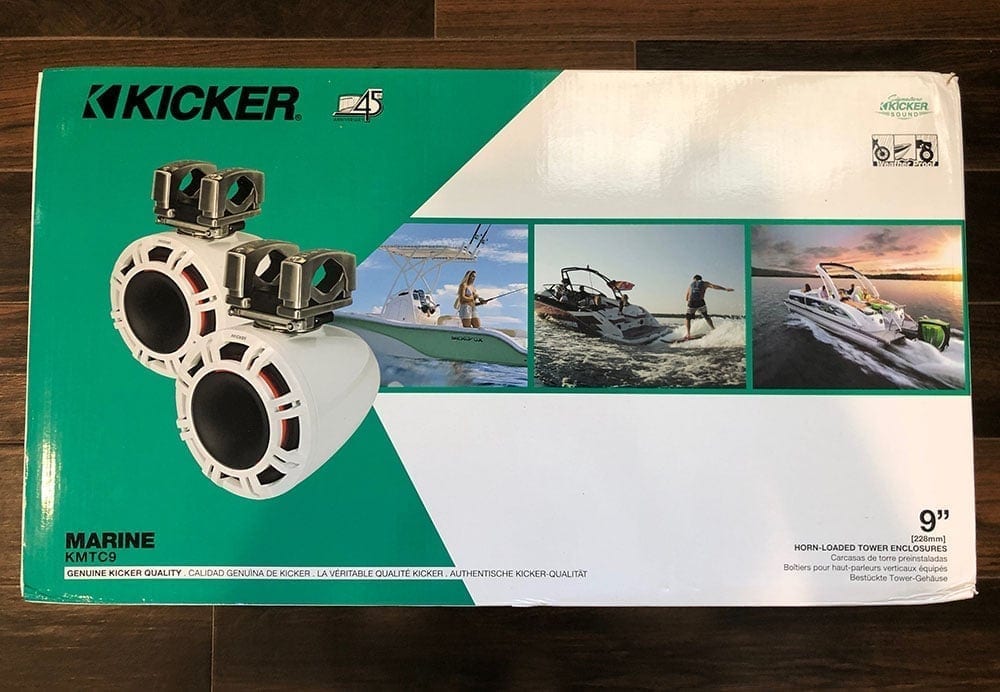
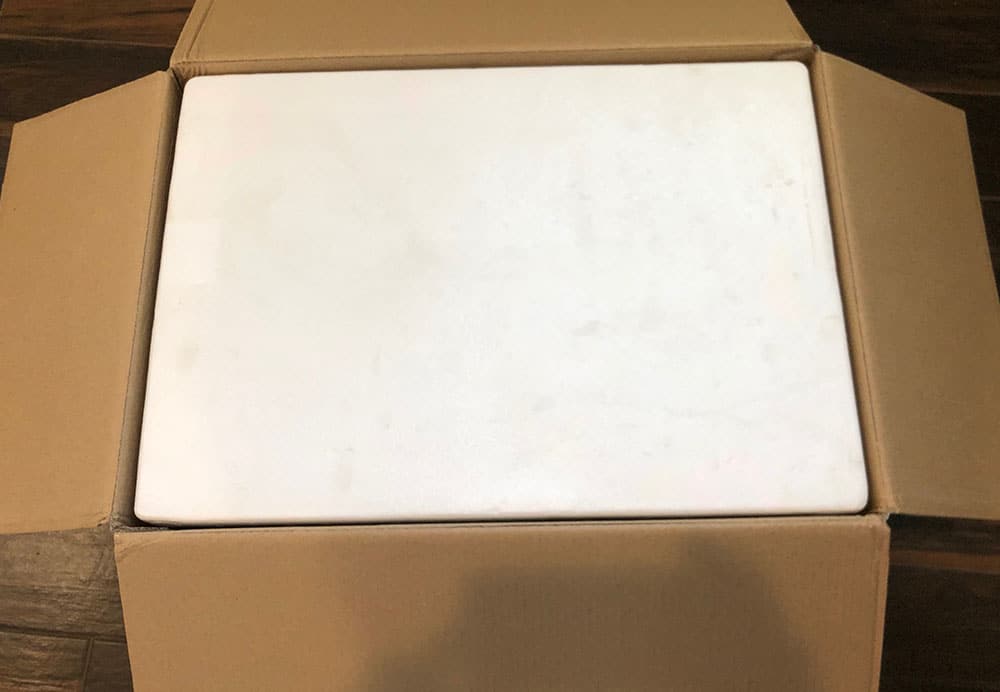
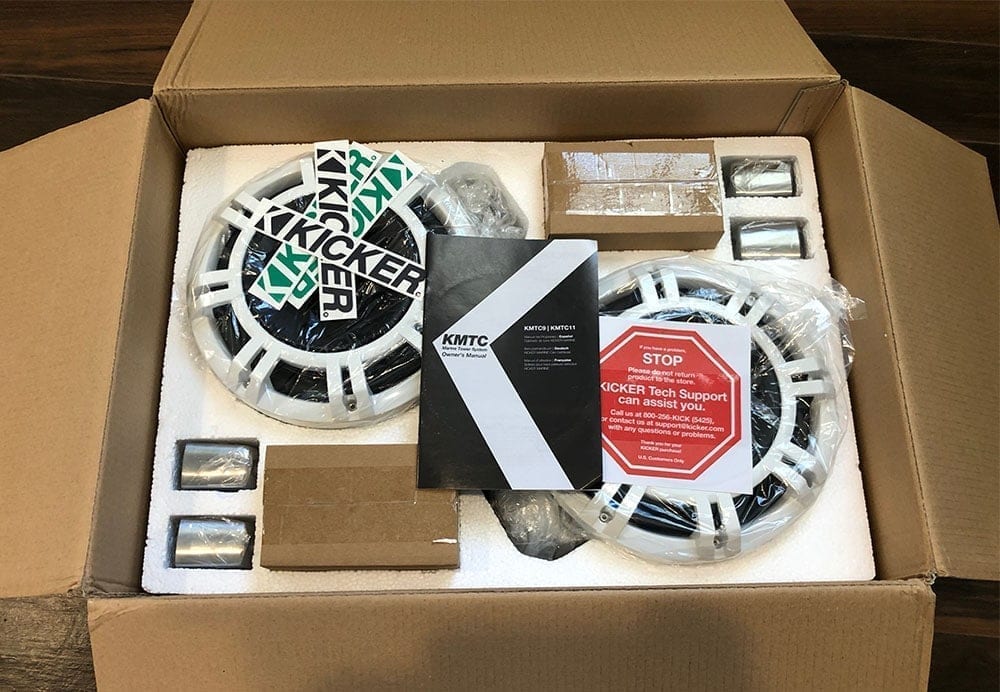
When you pull out each speaker, weight again is the first thing that came to my mind. The second thing is the horn design. In my opinion, it really helps bring out the aggressive look especially with the white pair of towers. It gives a great contrast to the white enclosure and grilles. It's also the largest horn I've seen on a tower speaker in person but it goes very well and is seamless. I've always been a fan of the grilles too on Kicker's KM series speakers and they did a great job blending the horn into a traditional grille.
They definitely pass the ‘feel' test too – these are probably the most stout speakers I've held to date for their size. The grille is by no means flimsy and are mounted directly to the casing along with the woofer via 8 stainless allen screws. They also have a really nice balanced look from front to back, meaning the enclosures aren't too short or too long. The flat surface on the rear with the Kicker logo was a nice touch as well. Out of the box these speakers look and feel great and have a really rugged design which made me comfortable, considering your tower speakers get hammered by the sun (and sometimes water depending where you mount them).
On the top of the speaker is the swivel mechanism. And I have to say they did a great job with the design on these. I'll get more into the clamping mechanism further in the article because I think it's an area where they differ from competitors.
I almost forgot to mention, literally, the LED lighting too. Kicker's KM series speakers all have a really cool design that tucks the LED on the underside of the grilles facing the woofer. You have to go searching for them, until they're on of course. I like the design – it doesn't make you feel like you're looking at an LED ring around your speakers. It's a unique, classy looking touch at night.
Unboxing a set of speakers as expensive as these should make you feel good, and I think they will when you get these yourself.
What's In the Box:
- 2 Waketower speakers
- 2 Lower mounting brackets
- 4 Upper mounting brackets
- Eight 3″ bolts
- Eight 2.5″ bolts
- Eight 2″ bolts
- Eight 1.5″ bolts
- Eight 1.125″ bolts
- 2 Packets of anti-seize compound
- Installation instructions
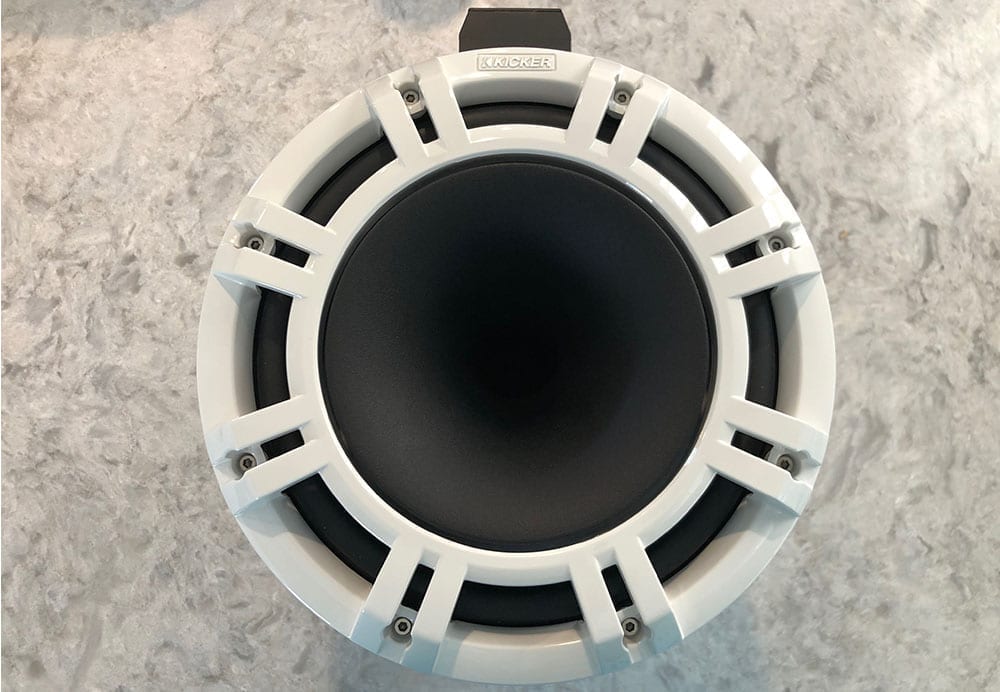
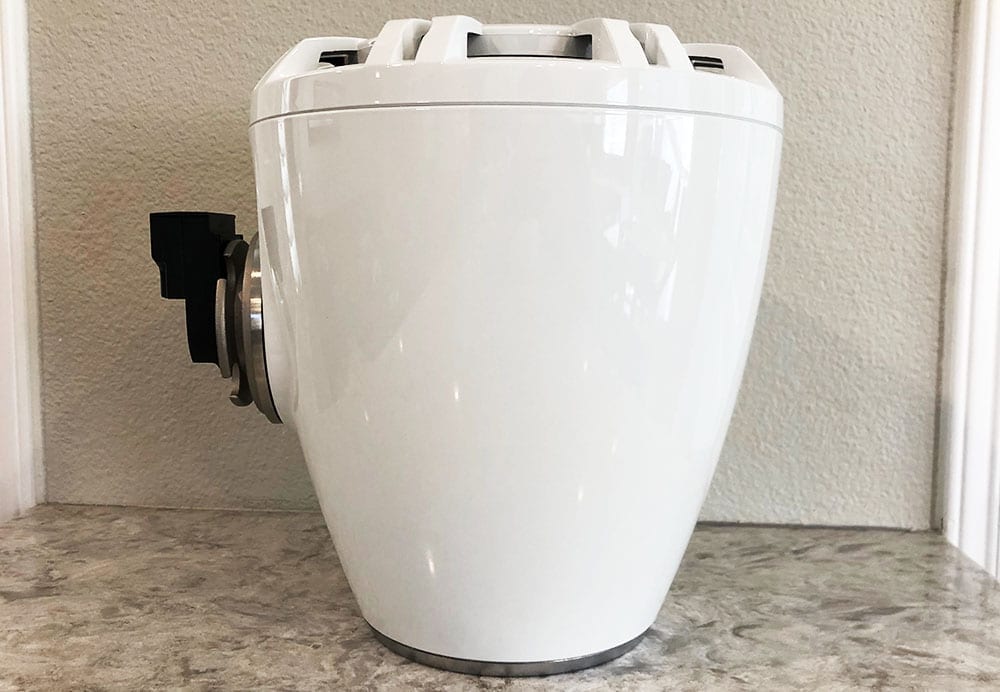
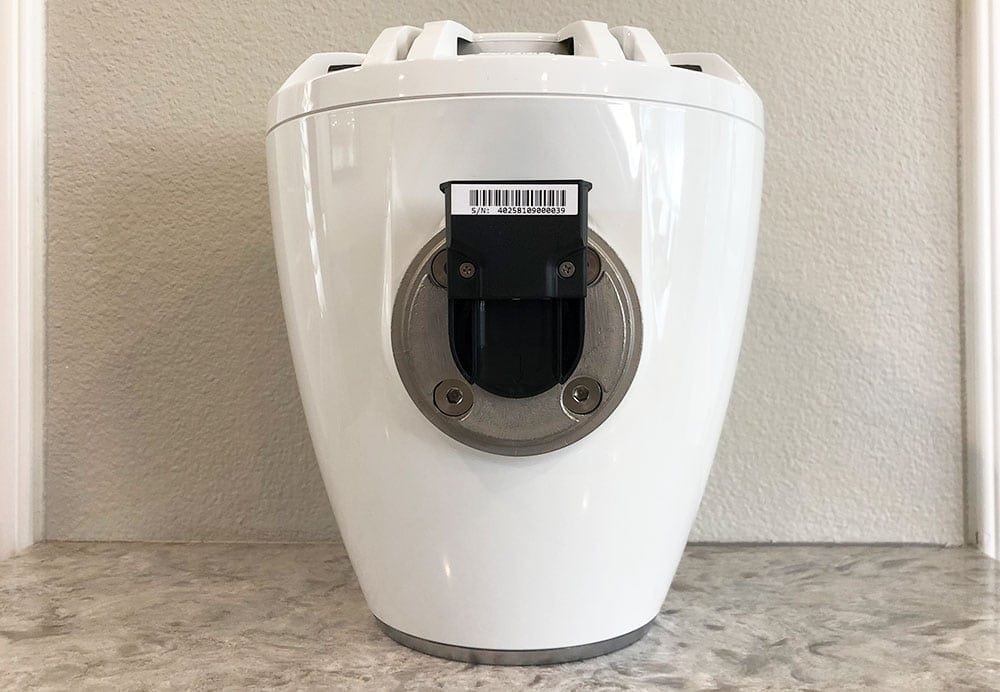
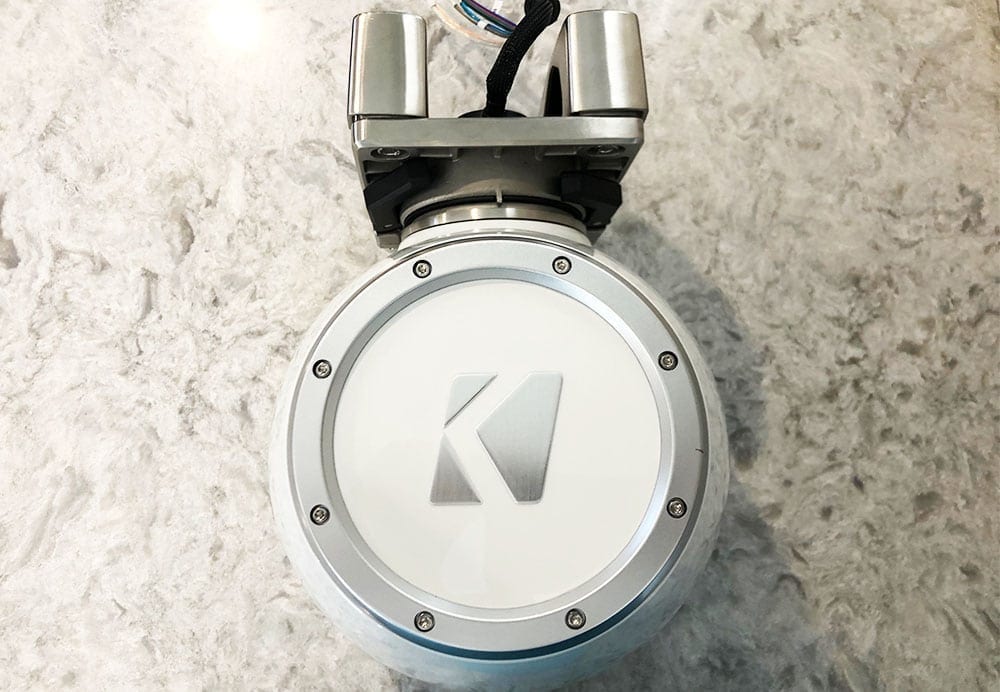
Sound Features – Horn Drive, Enclosure and Woofer
The KMTC9 is what's called a HLCD speaker (Horn-Loaded Compression-Driver), which basically means it has a speaker attached to a horn to increase its efficiency and ultimately help sound travel further. Let's walk through some of the key features of the KMTC9 speakers and what makes them sound good!
Horn Driver
The horn design on these towers looks aggressive and unique. They're built with poly and have a stylish look but the concept is still quite simple and straight forward. At the back of the horn you'll find a speaker, a 1.4in titanium-dome compression driver to be specific. This driver covers the high frequencies in your music and the horn helps them carry for longer distances. But unlike previous eras of horn-driver tower speakers, Kicker considered the downsides of HLCD speakers – they often emit harsh highs. Sometimes, so much so that they're literally painful to listen to. The horn driver on these speakers was designed to be better balanced with the mid and low-range frequencies to limit the harshness that normally comes along with these types of tower speakers.
One of the giveaways of this is the size of the horn itself. Many competitors have horn drives, but the diameter of the horn on these is wider at the mouth on these Kickers than many of the speakers I've seen and heard. I asked Kicker's Product Unit Director to help explain the horn driver and why it's better and his response was:
“The Kicker horn is different. There is no straight section of pipe. From the compression driver all the way out to the horn opening, as we move from driver outward, the cross-sectional area is changing, and as you move outward its rate of change also changes. If you looked at a cutaway cross section of the horn's edges, the change is quite apparent. As a result of this geometry, there are no standing wave resonances to cause the peaky sound found with other horns.”
My only concern with this design is that the horn actually covers a significantly larger portion of the underlying woofer which could have an impact on the sound that the woofer emits and therefore the lower frequencies. That said, this is a first look at the speakers and not a review of the sound itself.
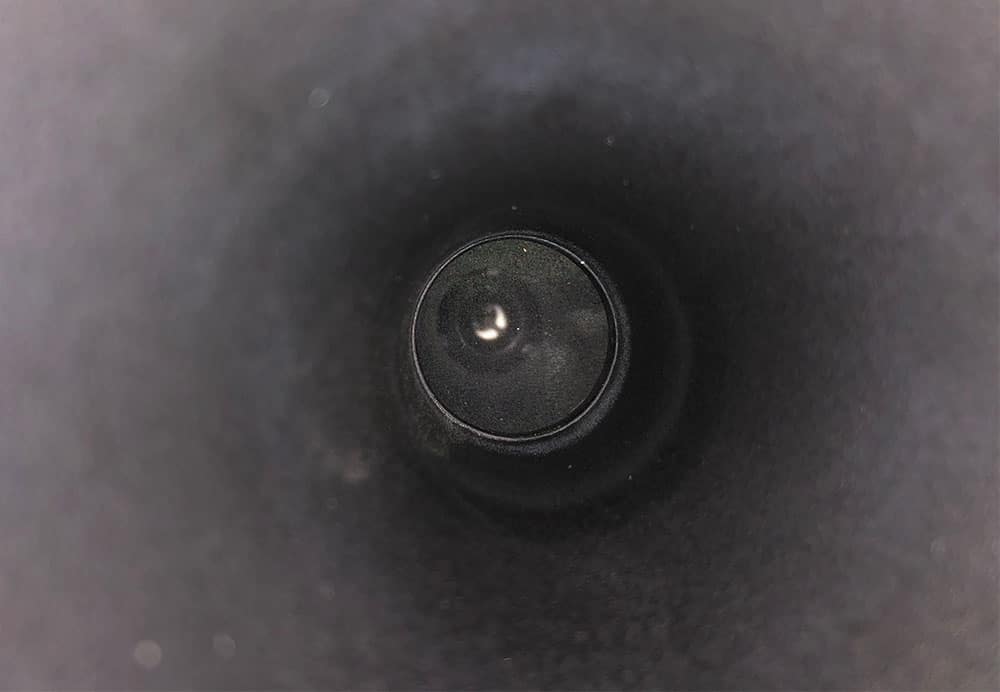
The Woofer
The KMTC tower speakers come in either a 9in or an 11in woofer. Most competitors come with 8 or 10in so this is actually a very unique design in that sense. I actually really like it. I think a 9in is the best of both worlds when you're trying to get the best bang for your buck in terms of full range tower speakers. The larger the woofer though, the better it's going to cover the lower, bassy frequencies.
The woofer itself is made from UV-treated polypropylene with a Santoprene rubber surround. Santoprene rubber is the gold standard when it comes to surrounds and provides a very reliable speaker when combined with a UV-treated polypropylene woofer. Like all horn driver tower speakers, the woofer surrounds the horn meaning the surface area of the woofer is actually sacrificed for the ‘greater' good of the horn. This makes the woofer actually smaller than it would normally be in surface area. It's very similar to a coaxial-style speaker in that sense.
Structure & Enclosure
With the older tower speaker enclosures, you'd learn the hard way that they aren't as resilient to the sun's rays as the rest of your boat. Flaking and fading enclosures were pretty common. In fact, I cover my own tower speakers after seeing some of the other black tower speaker enclosures fade. The KMTCs feature UV protected injected-molded enclosures and were built with that in mind. Only time will tell if that's the case though.
The entire structure is sealed, meaning the terminals, the speaker motor, terminals – it's all water tight to ensure it lasts and all of the hardware is either stainless steel or aluminum to prevent premature corrosion in the elements.
I will say that I tried to get a closeup of the horn drive and the woofer, and removed all 8 of the tightly secured stainless allen screws only to find out that the grille doesn't easily come off. After about 5-7 minutes of tinkering with it I gave up in fear of scuffing something or breaking it. Shortly after, I reached out to Kicker about this and found that there are supporting fasteners from the clamp at the top of the enclosure that actually screw into the back of the woofer and the horn driver. Also, the wiring from the LED lighting would prevent the grille from coming off entirely. The pictures below were the ‘closeups' I could get without disassembling the entire speaker.
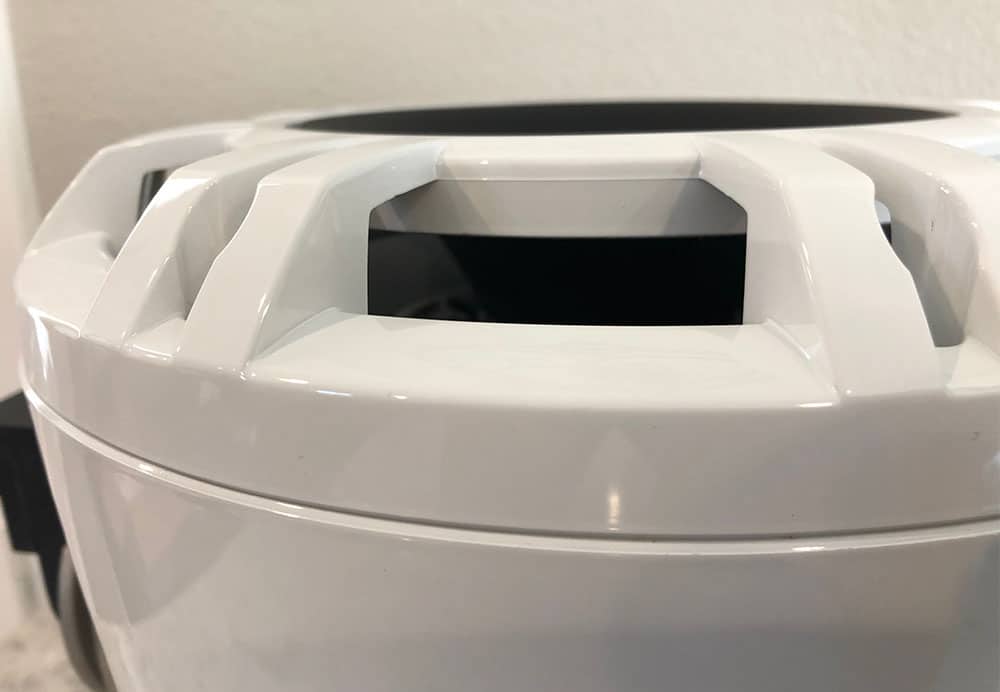
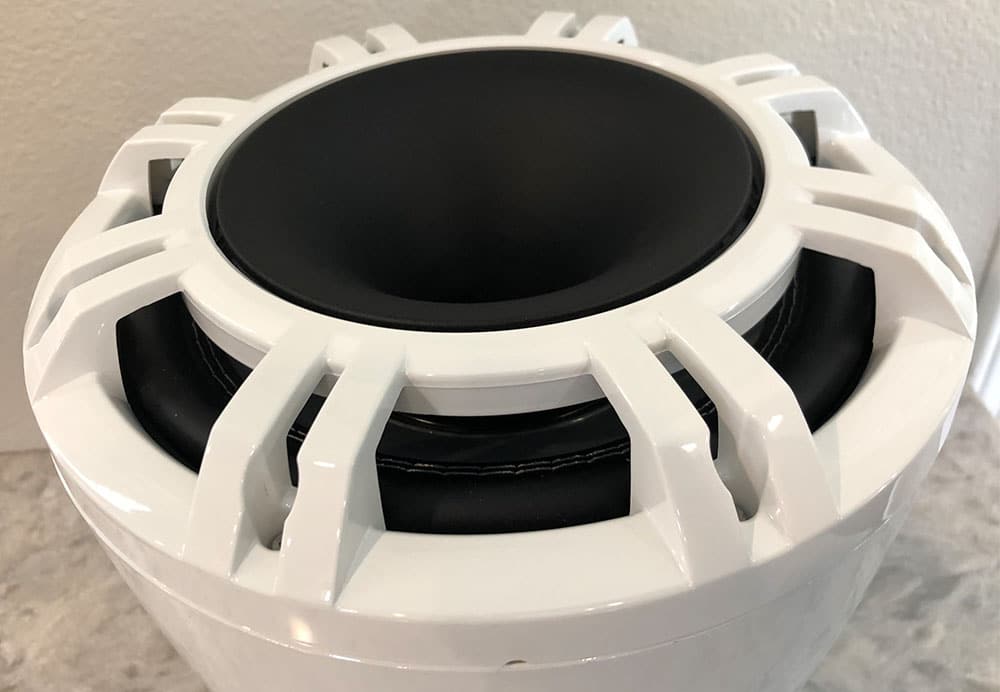
The Swivel Clamps
I was not expecting the level of thought and precision that went into the mounting system on these KMTC speakers when I pulled them out of the box. These are the most durable, heavy-duty and reliable swivel clamps I've seen by far. That all said, if you're not surface mounting them it may come at a cost – they're bulky.
Kicker designed a cam/toggle locking system that swivels 354 degrees that gives you nearly full rotation of your speakers. I have had swivel mounted tower speakers, and I'll never go back. The one complaint that I did have about my own was that I had to pull out an allen wrench, loosen the allen and then tighten it back up when I faced them where I wanted them.
To mount these speakers, there's a locking ‘bracket gate' that has two screws to fully remove and allow the speaker to slide onto the clamp. No allen wrenches needed. Once placed into the clamp you place the bracket gate back on and screw it into place with the swivel levers unlatched. Swivel the speaker where you want and clamp the levers down to fix the speaker in place. Here's a look at some of the instructions from Kicker.
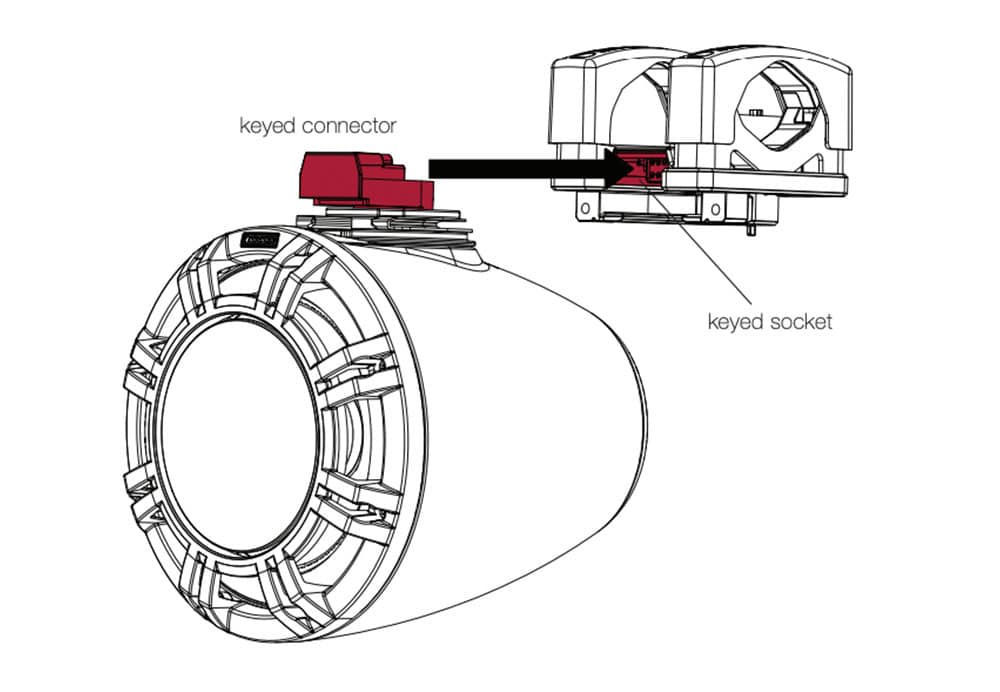
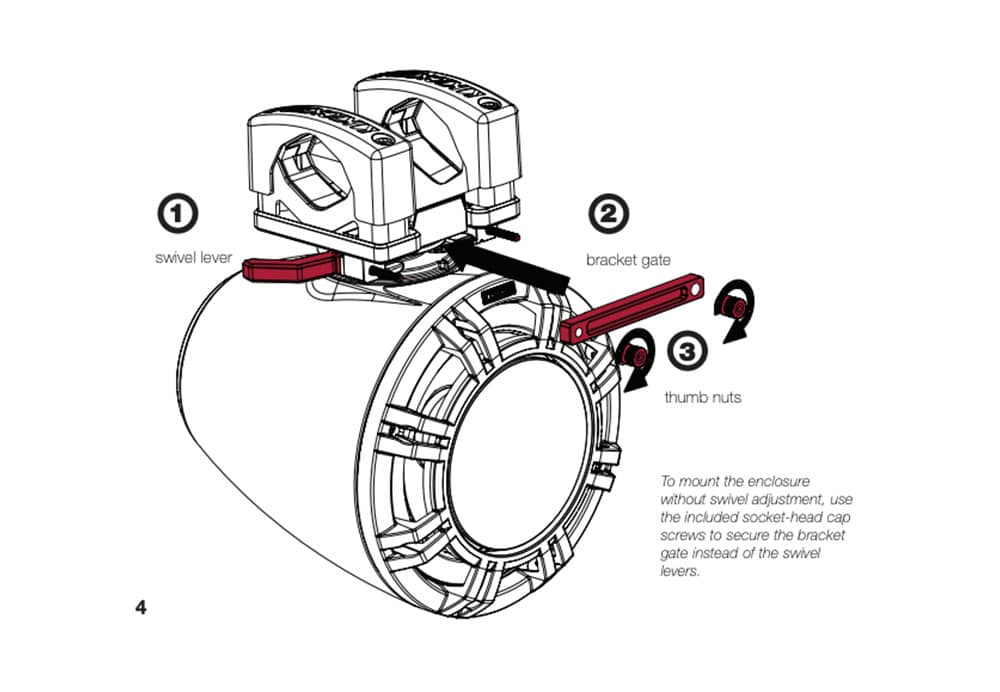
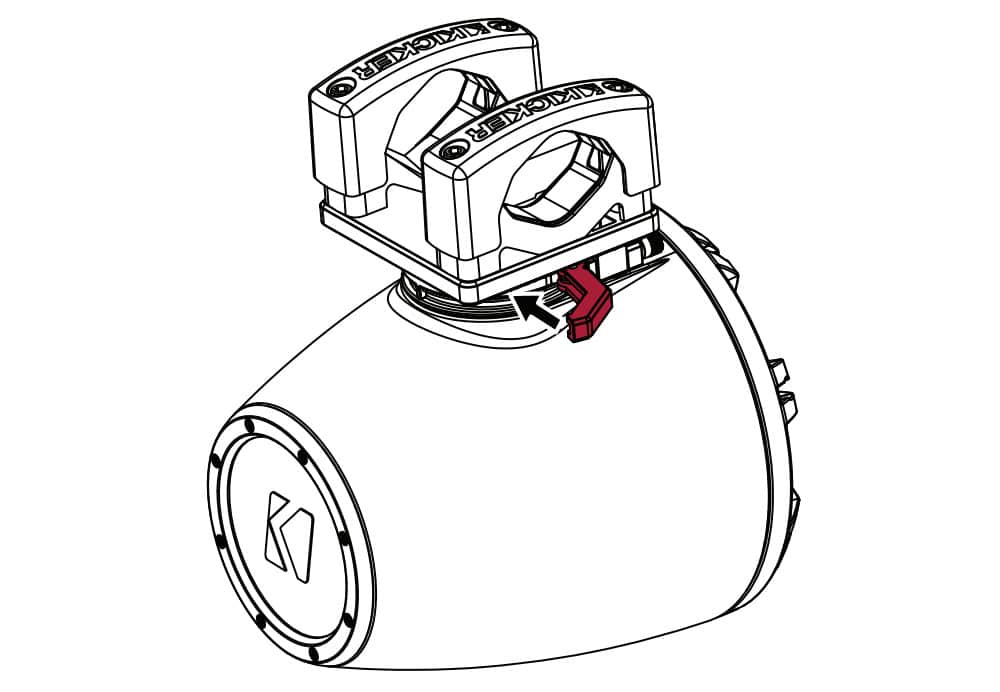
And a few closeups in person
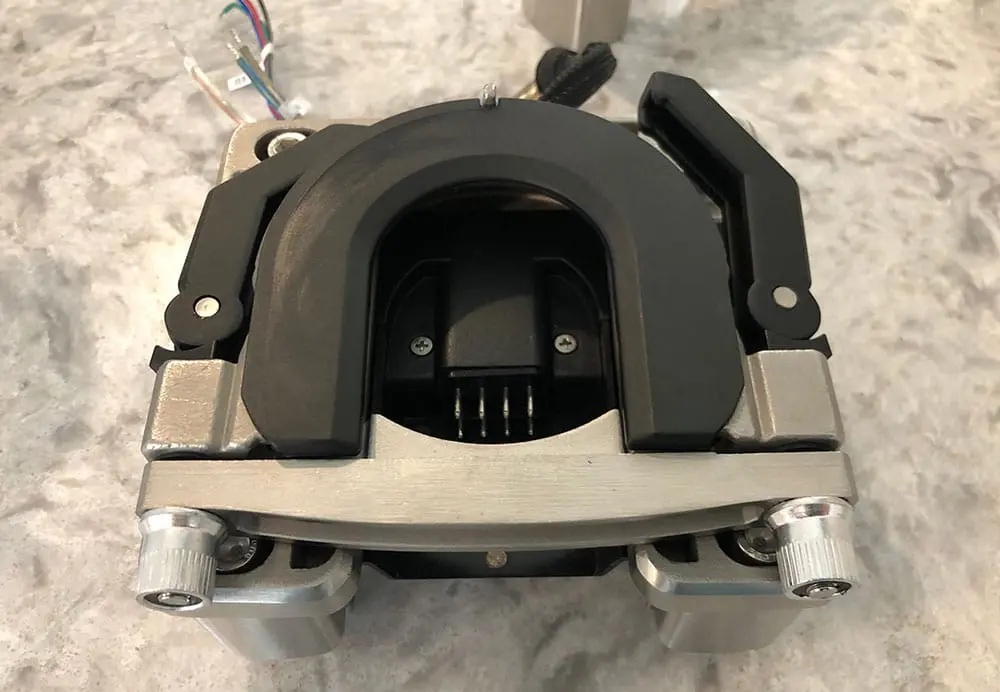
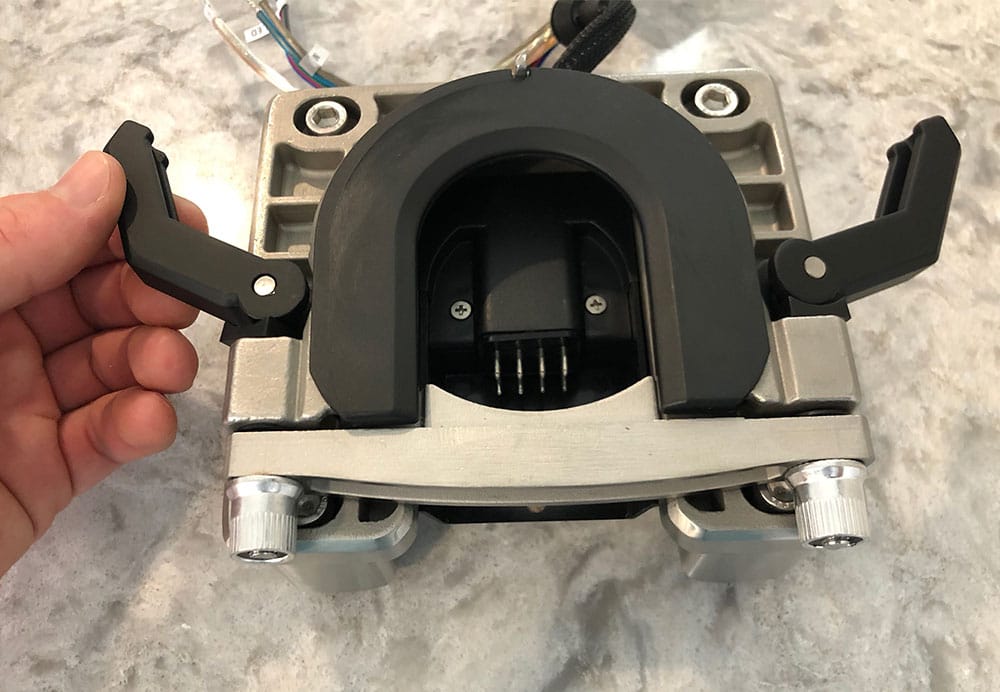
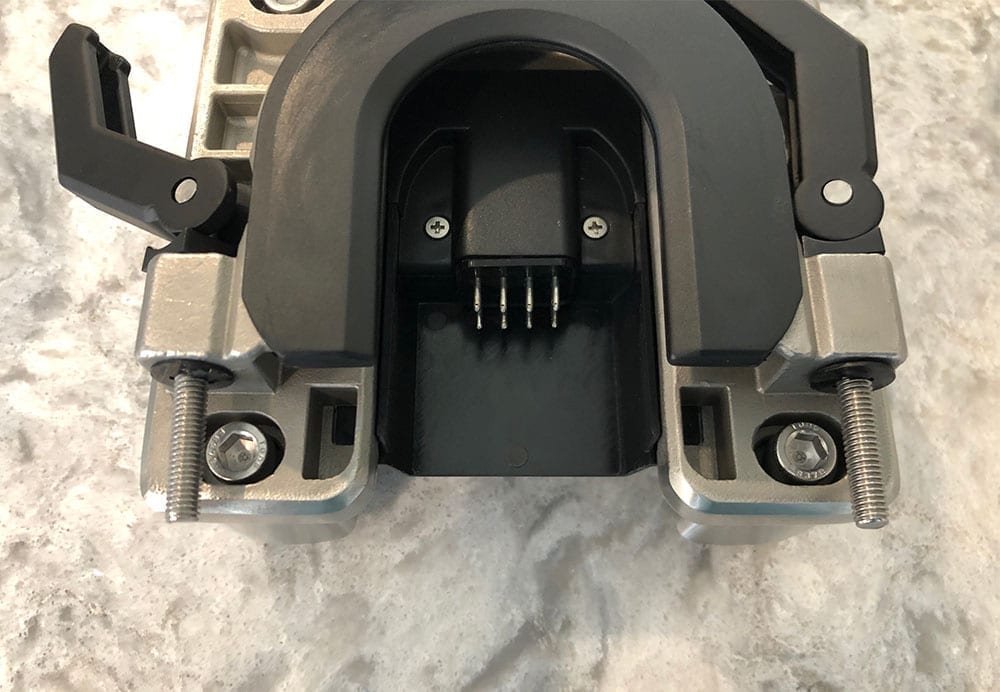
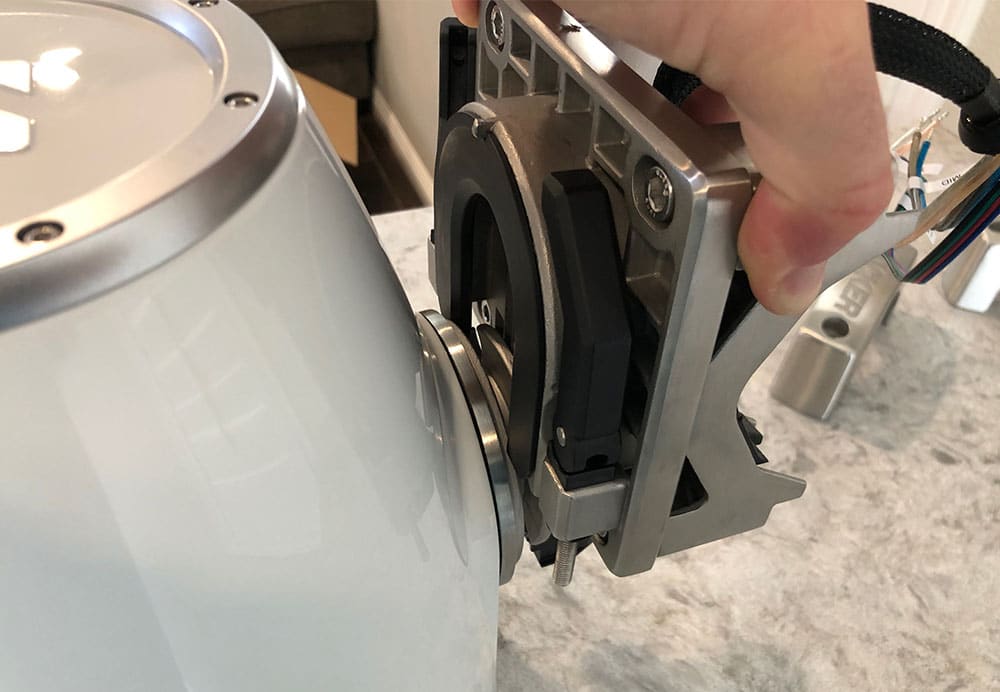
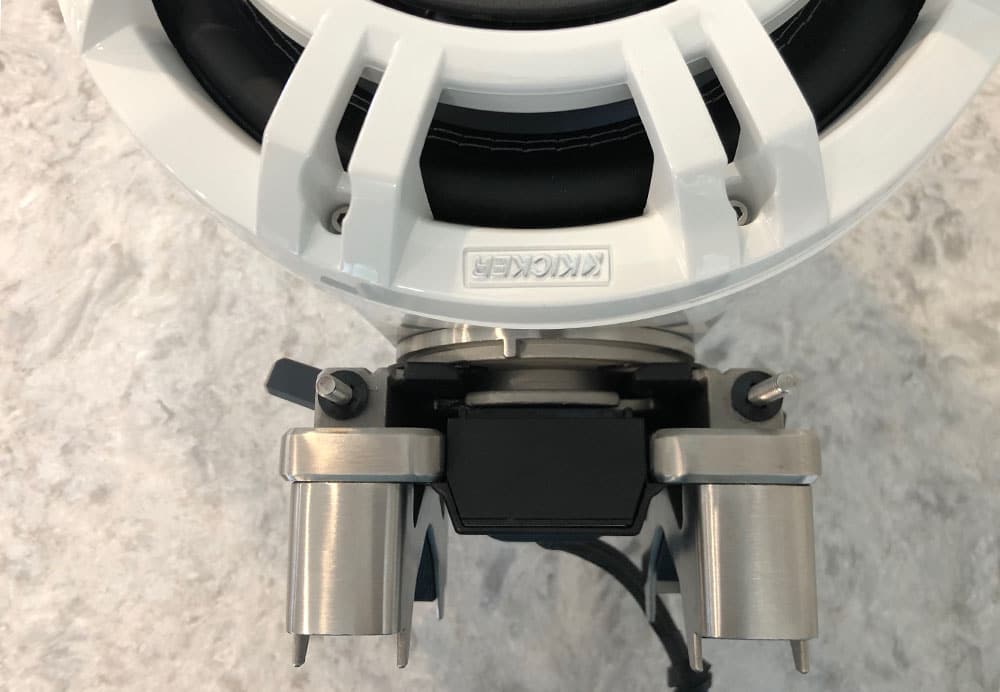
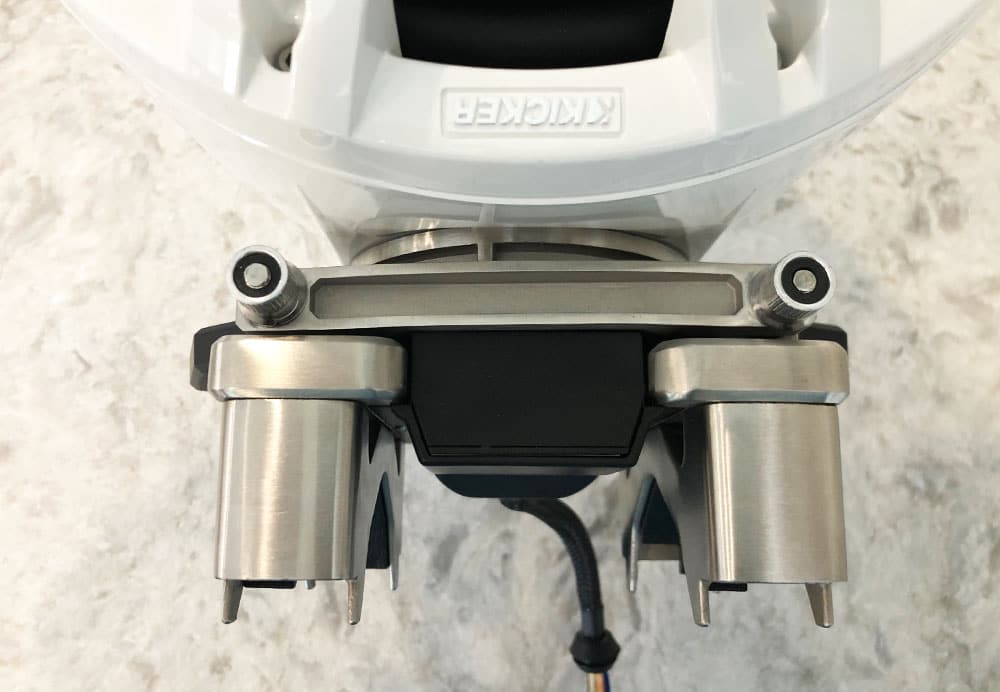
If you want to surface mount these swivel mounts, that's an option too. There's four screws on the back side of the mount that will remove the clamping mechanism for towers. Flip the mount around and you have yourself a surface mounted swiveling tower speaker!
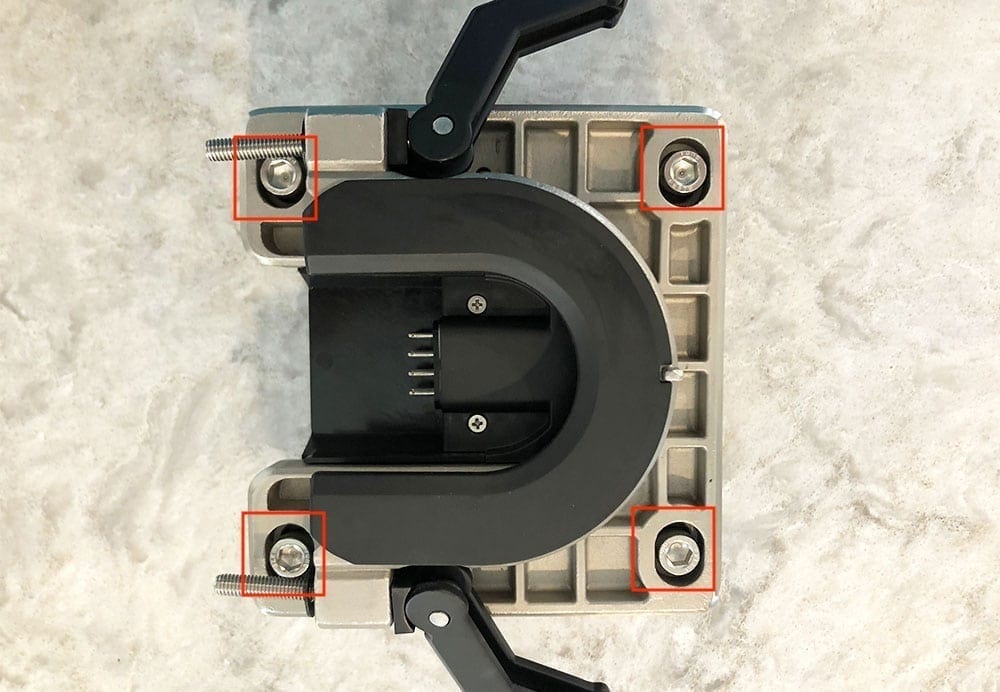
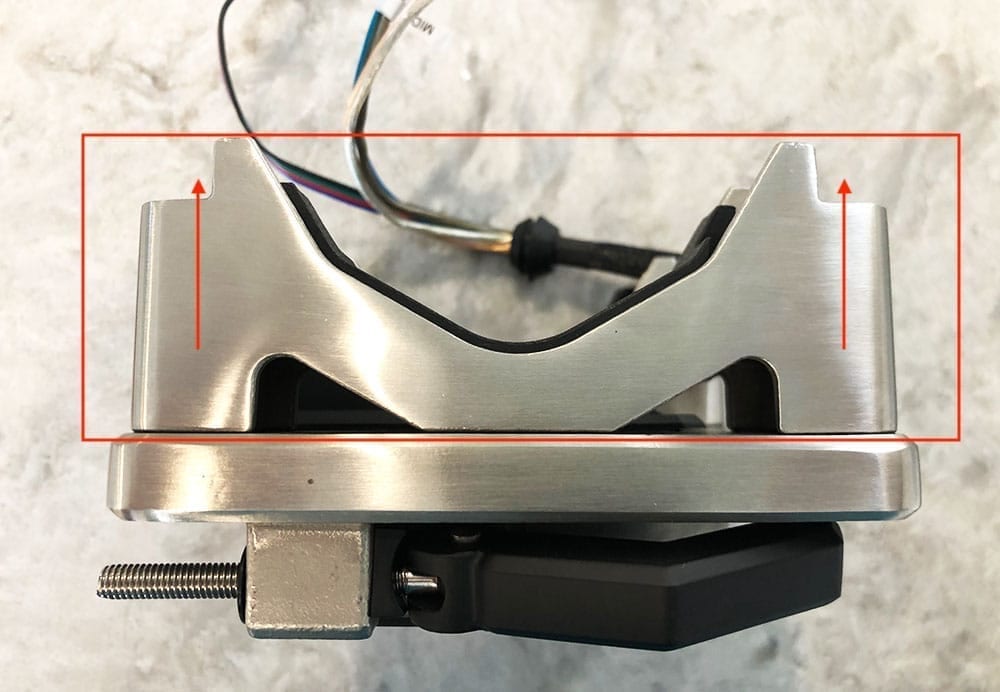
Although you can surface mount these swivel mounts, they come out of the box ready to mount on a wakeboard tower. They can fit on bars between 1-1/2″ to 3-1/8″ in diameter and come with five sets of bolts to make that happen. There's two mounting bars that screw onto your tower bar, which really fixes it into place and will prevent any wiggle that you may see on older, cheaper tower speakers. Your wakeboard tower will move before these speakers do
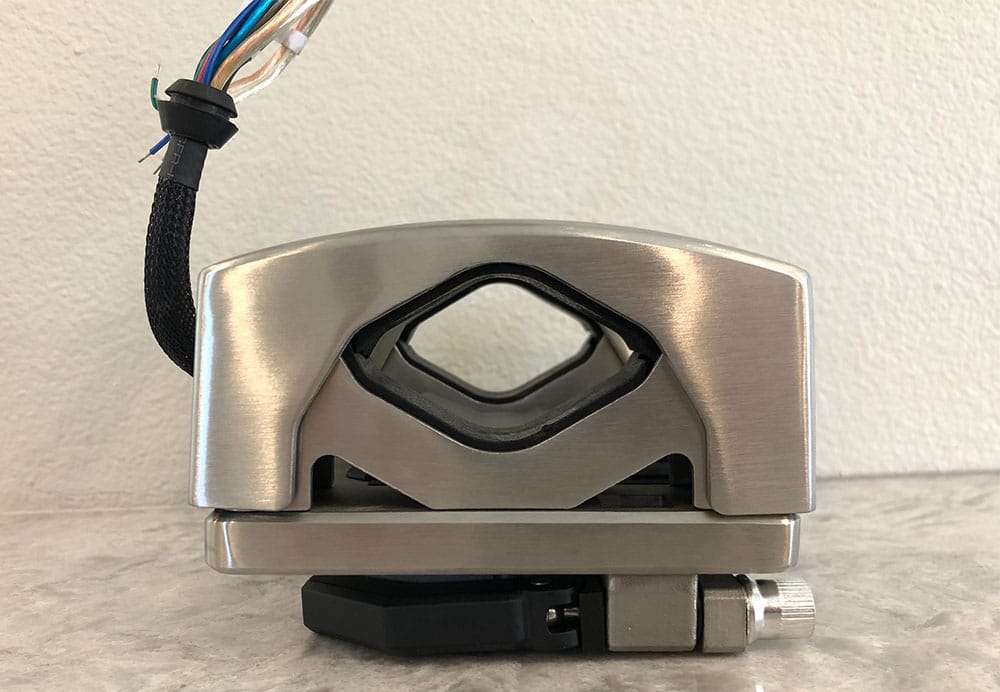
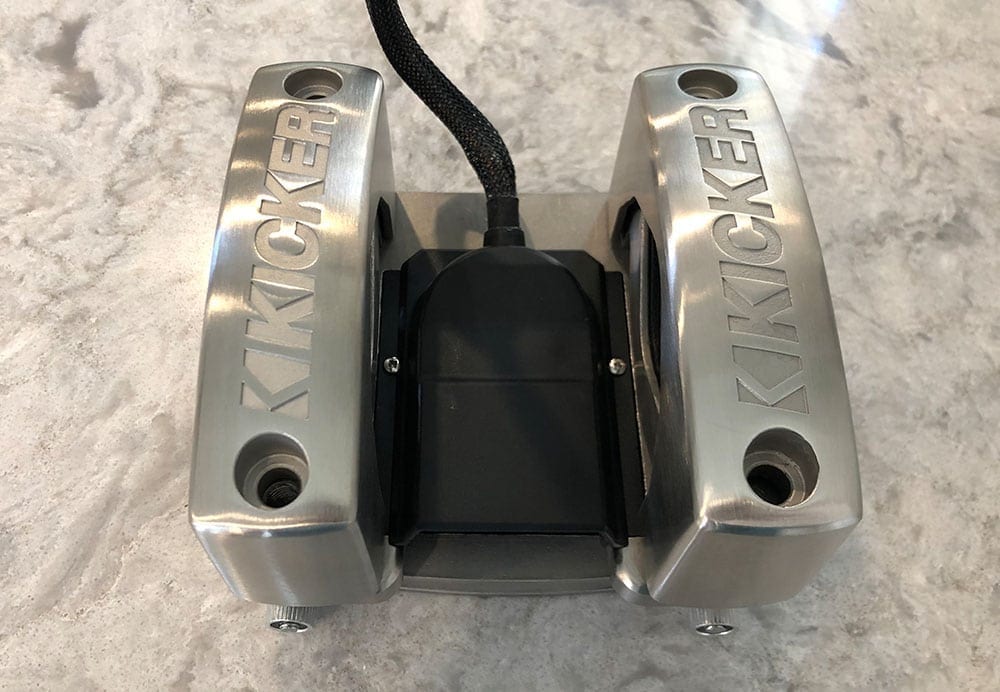
Marine-Specific Features
Obviously a marine-grade product is what you're looking for if these speakers are going onto a boat. Kicker did a really great job at making a speaker that is fit for the elements. And when you look through the features online, and the speakers in person, you really get a sense at the lengths they went through to make these withstand the elements when designing the latest KM series of products, including these tower speakers. Let's break down a few key components that stand out:
UV Protection:
- Injection-molded woofer cones are made of UV-treated polypropylene
- Speaker enclosures that are UV-resistant inhibitor to prevent fading or discoloring
Corrosion & Water Resistant Protection:
- Injection-molded polypropylene speaker enclosures and woofers
- Stainless steel and aluminum hardware
- ASTM B117 200 hr. Salt Fog Tested and ASTM G154 400 hr. Accelerated UV Test
- Santoprene rubber surrounds
- Fully sealed motors
- Locking, water resistant terminals
One of the cool features I always like to call out, more to showcase the thought that went into making these speakers marine-grade than anything, is the water-drain on the bottom of the speaker's grille.
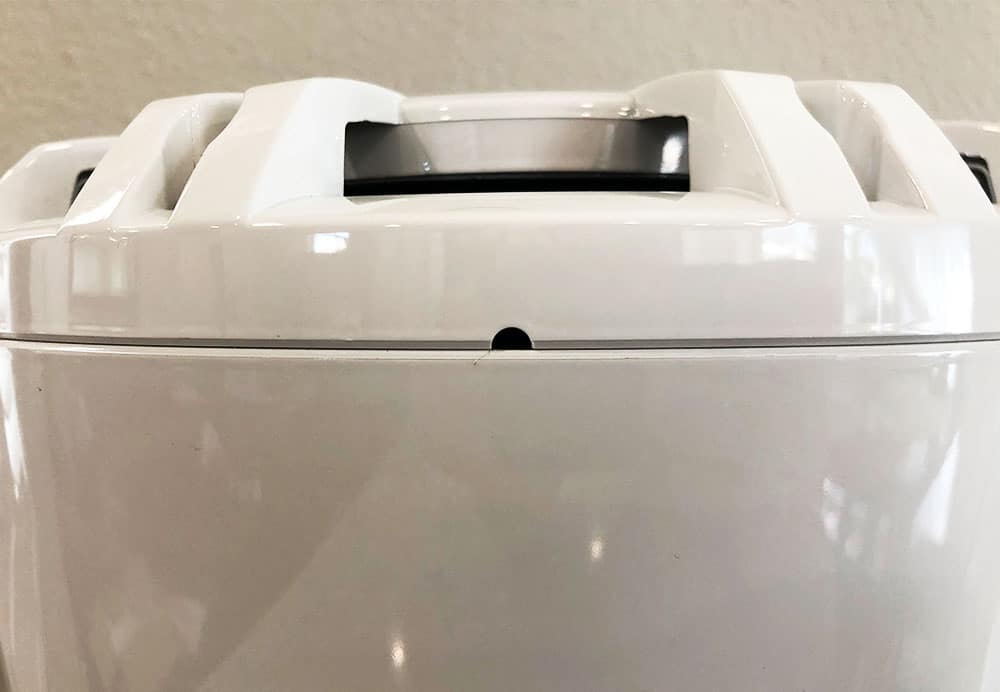
When they're on the tower, you might not necessarily ever put these small drain holes to use or hose down your speakers but for the folks who place these flat mounted towards the stern of their boat it may actually be another corrosion resistance feature. But more than anything this little feature gave me confidence that they were thinking about it and that they put that thought into the rest of the speaker.
LED Lighting
For those who want a show on the water at dusk and well into the night, LED lit speakers are a must have. Kicker's KMTC towers have a seven-color LED system with the LED light mounted on the backside of the grille facing the cone of the woofer. This reflects the LED light across the entire cone of the speaker instead of directing it outwards.
To wire the LED lights, you have two options: with or without the KMLC lighting controller. Let's start by walking through the ‘without' scenario. Without the KMLC, like mentioned, you have 7 colors to chose from:
- Red
- Green
- Blue
- Lime Green
- Magenta
- Aquamarine
- Blue-White
You can only really have one color selected at a time without getting really fancy with the wiring (and if this is really what you want you should get the KMLC controller). But it's pretty straight forward – you simply need a positive (switched) and negative wire. The LED wires from the speaker have a power and 3 signal/ground wires and you just combine those 3 signal/ground wires in different ways to make a different color. Here's the manual:
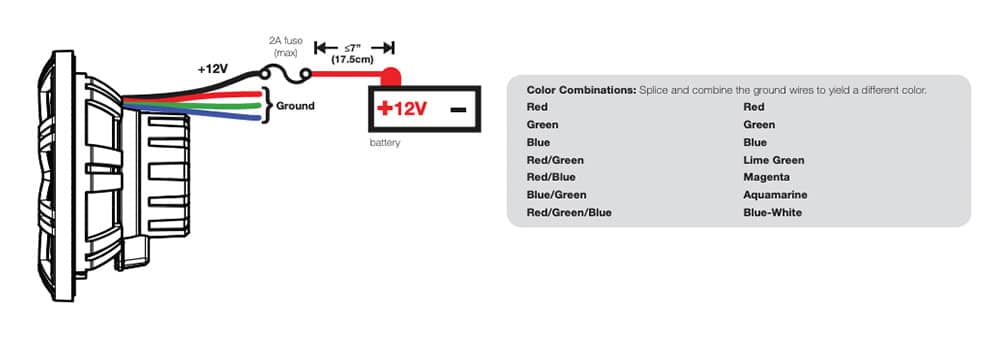
The other option is to purchase the KMLC lighting controller add on which is sold separately. This controller essentially upgrades your LED lighting to enable 20 colors instead of 7. AND it also has lighting modes that will allow you to do things like pulsing, alternating, solid, and beyond. Wiring for this is straight forward, but we would recommend that you purchase Kicker's RGB Speaker Wire. It'll simplify the wiring process through your tower if you don't already have the proper wiring. It's expensive.. ~$150 bucks for a spool of 150ft, but it has all of the wires you need to wire up your LED speakers, wrapped in a waterproof casing. You'll wire all 6 wires from each speaker and combine all of the 4 LED wires to the KMLC controller at the power source. Then, you have full control over the color and the mode from a wireless remote! And if you have the KM coaxial speakers and KM Free Air Sub with LED, you can combine them all into one for a hell of a show.
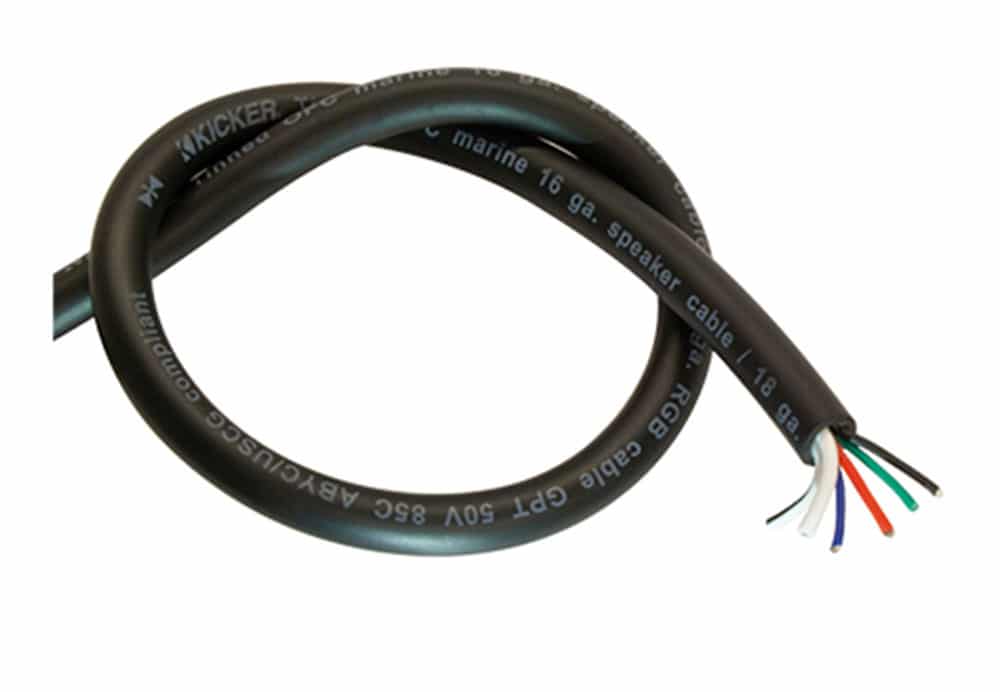
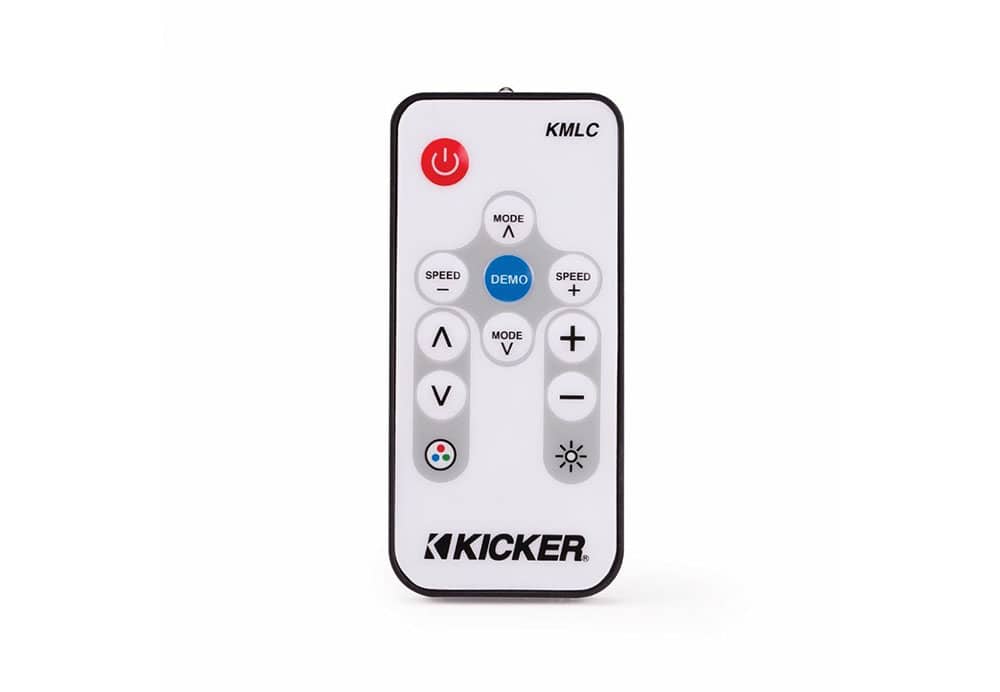
Highlights & Specs:
- 2-way 9″ marine wakeboard tower speakers (pair)
- UV-treated polypropylene woofer with Santoprene rubber surround
- Proprietary-compression horn design with 1.4″ titanium-dome compression driver
- 359° swiveling clamp system
- 7-color LED grilles included
- optional KMLC remote controls 20 color options and 19 dynamic modes
- sealed motor structure
- stainless steel mounting hardware included
- UV-resistant polymer basket
- handles up to 300 watts RMS (600 watts peak power)
- frequency response: 20-20,000 Hz
- sensitivity: 92 dB
- impedance: 4 ohms
- dimensions: 13-9/16″H (including bracket) x 9-13/16″W x 10-7/8″D
Conclusion
Kicker was certainly thinking in terms of ruggedness, durability, quality and aggressiveness when they designed the KMTC9. Personally, I love the look of the enclosures and grille. The horn driver is pretty dominant in these speakers but I think that they look great, especially on white.
Swivel clamps are a must-have in my opinion, and I think Kicker designed them really well. Again, durable and aggressive but they're a little bold and bulky for my taste. Nonetheless they're possibly the most over-engineered swiveling mounts I've seen so far (in a good way) and make swiveling and removing the speakers very practical and easy compared to some competitors.
When it comes to power, these things can handle it. Their Marine Product Unit Director recommended to pair these with their KXMA1200.2. This would be our recommendation too. Check out our KXMA amplifier review and you'll see why. But at the end of the day, they handle 300 watts so make sure you just have the power ready for them.
All in all – these are some great speakers and I'd recommend them highly. So much so, that they rank among the top speakers in our list of best wakeboard tower speakers!

